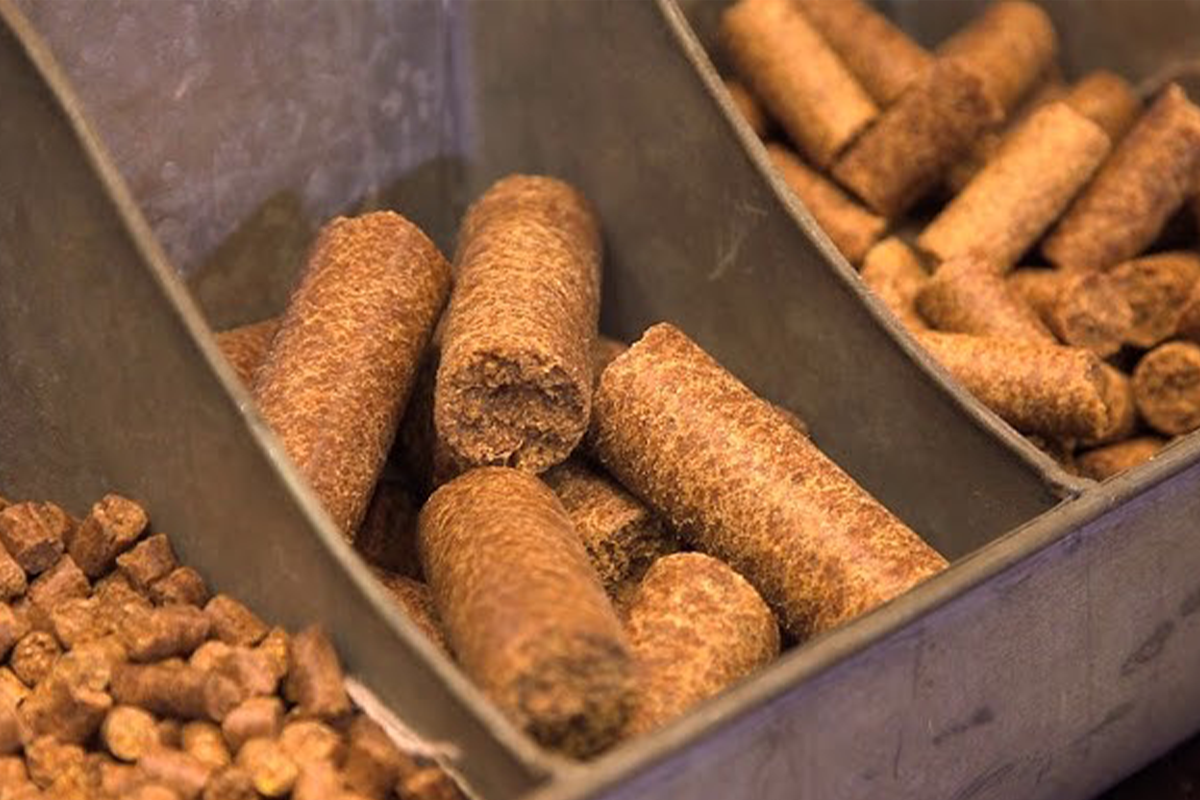
Enea’s zero-waste approach: turning arthropods byproducts into chitosan
Chitosan extraction from marine resources and fungi: Enea Trisaia Research’s goal to achieve sustainable, cost-effective, and large-scale production that doesn’t rely on petrochemicals
What is Chitosan? The enzyme-based extraction method discovered by Enea Trisaia Research Center
A new study conducted by researchers at the Enea Trisaia Research Center explores the development of cosmetics and pharmaceutical products derived from crustaceans, mushrooms, and insects.
The Bioproducts and Bioprocesses Laboratory at the Enea Trisaia Center is initiating a research project to extract chitin using an enzyme-based method. These two macromolecules composed of carbohydrates fuel an annual turnover of nearly $4 billion, with a projected increase to $12 billion by 2027.
The research and innovation from the Enea Trisaia Research Center have been well-documented and published in the open-access journal Clean Technologies and Recycling, provided by AIMS Press.
Enea: Trisaia Research findings reveal chitin and chitosan extraction from arthropods and the cell walls of fungi
Hypoallergenic cosmetics, pharmaceutical products, and functional foods capable of combating oxidative stress responsible for many diseases are some of the primary applications of raw materials like chitin and chitosan.
These findings represent a knowledge tool that will allow them to launch a new line of activity within the year.
Alessandra Verardi, a researcher at the Bioproducts and Bioprocesses Laboratory at the ENEA Trisaia Research Center, explained that the subsequential focus will be on the production of chitosan, which already finds applications in numerous fields – from the chemical and agrochemical industries to the medical, pharmaceutical, cosmetic, and food industries – thanks to its unique properties of biocompatibility, biodegradability, low toxicity, and allergenicity.
Chitin and chitosan extraction traditionally requires high process costs and limit scalability
Chitin is the most abundant natural biomass after cellulose, a raw material whose annual production is over 100 billion tons. The process encompassed by Enea can be carried out under milder conditions. They employ biological processes to extract chitin from the exoskeleton of crustaceans, where the highest concentration of chitin is found, using an enzyme-based method. Normally, only 40% of the harvested crustaceans are edible, while the rest is discarded. Following the zero-waste philosophy and approach, Enea Trisaia Research Center utilized these discarded parts as the source for their experimentation.
The most commonly used treatment has a high environmental impact, while alternatives are characterized by high process costs that limit scalability. The primary method for obtaining chitosan involves the alkaline deacetylation of chitin using a strong alkaline solution for varying durations. It requires three procedures: deproteinization, which begins by heating 3 grams of shell powder after adding 2 N NaOH with a ratio of 12 ml per 1 gram (w/v) at 70˚C for 4 hours. The resulting product is neutralized by rinsing it under running tap water. The solid material left is then gathered, washed with distilled water, and subsequently dried under vacuum conditions.
Its weight was measured using an analytical balance. Following the demineralization procedure, the dried solid material is treated with 10% HCl (3.25 N) at a ratio of 14 ml per 1 gram (w/v) at room temperature and left for 4 hours. The solid product is then collected, washed with distilled water, and subsequently dried. Lastly, the deacetylation procedure, when the demineralized product is treated with 35% NaOH (8.75 N) with a ratio of 14 ml:1g (w/v) at room temperature for 75 hours.
Crustaceans are the primary source for chitosan extraction
With a global production of approximately 15 million tons per year from aquaculture and fishing and a high chitin content, crustaceans are the primary source for extraction. Chitosan from marine resources offers an alternative and more sustainable option for the incorporation of the ingredient in the world of cosmetology.
Chemically, chitin is a natural biopolymer with a structure very similar to hyaluronic acid, composed of the repetition of glucosamine and N-acetylglucosamine. Chitosan, a derivative obtained by removing the acetyl groups, is more commonly used in cosmetics due to its minimal structural difference, which makes it easier to work with. In cosmetics, chitosan is widely used in various types of products as a thickening agent, film-forming agent, and it also enhances the effectiveness of sunscreens.
Specifically, at low concentrations, chitosan exhibits hygroscopic properties and, thanks to its similarity to hyaluronic acid, can serve as a viable alternative, helping to restore the skin’s barrier function and improve tone and elasticity.

Chitosan could replace sensory properties of silicones in cosmetic industry
Chitosan’s most interesting role is that of a rheological modifier and thickening agent. It interacts with water, serving as a sensory agent to make formulas more consistent and pleasant to use, a role often fulfilled by polysiloxanes, better known as silicones, in cosmetics.
In this regard, over the past year, the impact of incorporating chitosan with milk proteins and jojoba oil on the rheological properties of emulsions has been studied, aiming to create stable and high-performance formulations. The study revealed that these ingredients behave like gels but are more viscous and thermoreactive than the mixture containing silicone, milk proteins, and jojoba oil, without chitosan. This represents a big turning point in the use of more sustainable alternative ingredients compared to those currently in use, such as silicones.
Shift from petrochemical sources to chitosan must not compromise effectiveness of the final products
The cosmetic industry faces a necessity to create and innovate environmentally sustainable products to meet consumer demands and comply with international regulations. This involves replacing some conventional ingredients derived from petrochemical sources with more eco-friendly alternatives. However, this shift towards using green ingredients must not compromise the effectiveness of the final products. Chitosan and its derivatives are emerging as promising candidates in this new direction for the cosmetic industry due to their compelling physicochemical and biological properties.
This shift is particularly critical when considering the replacement of common polymers traditionally used in cosmetic formulations. Polymers serve diverse roles in cosmetics, including as rheological modifiers, emulsifiers, stimuli-responsive agents, conditioners, film formers, fixatives, foam stabilizers, skin-feel enhancers, and antimicrobial agents, making them some of the most frequently used ingredients in various cosmetic products.
Chitosan has various derivatives, including chitosan hydrochloride, chitosan acetate, chitosan lactate, carboxymethyl chitosan, quaternized derivatives, oligosaccharides, chitin sulfate, and carboxymethyl chitin, which are currently employed in various cosmetic applications. They have gained significant attention due to their cost-effectiveness and safety characteristics, valid attributes that have made them an attractive option for exploitation in cosmetics.
Enea research team goal is to achieve sustainable, cost-effective, and large-scale production of chitosan
The challenge for the Enea Research team, including Alessandra Verardi, who is a co-author of the study along with Paola Sangiorgio, Stefania Moliterni, Simona Errico, Anna Spagnoletta, and Salvatore Dimatteo, in collaboration with the laboratory at the Enea Research Center in Portici and the University of Calabria (Laboratory of Transport Phenomena and Biotechnology), is to achieve sustainable, cost-effective, and large-scale production of chitosan. This chitosan can be used not only in cosmetics in powder form but also as a delivery system for the transport and release of antioxidants like polyphenols and carotenoids, which are also extracted from agro-industrial waste, thereby preserving and enhancing their beneficial properties.
While the researchers have already conducted preliminary tests and are working on the formulation, they will proceed with toxicological tests before offering it to specialized companies. The formula is expected to be ready by the end of 2024.
ENEA Trisaia Research Center
Established in 1963, the ENEA Trisaia Research Center was initially created as a facility for the reprocessing of irradiated nuclear fuel. Today, it has evolved into a scientific and multidisciplinary center dedicated to research endeavors in the realm of sustainable development, encompassing a diverse range of fields, including: bioenergies, biotechnology, novel materials aimed at enhancing energy efficiency, and agro-ecology.







